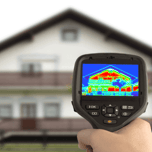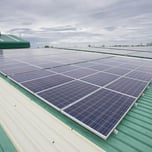- GreenMatch
- Sustainable Construction
- Sustainable Design
Sustainable Design
Information about Sustainable Design
In the last couple of years, we have heard a lot about renewable energy sources. Harnessing green energy can bring us savings on utilities and we also leave a less significant carbon footprint on the environment. But what if we want to build or transform our current house into a sustainable, energy-efficient house with the use of green technology? The answer to that is sustainable design. This concept is represented by ideas implemented when building the house, but it is possible to carry out a sustainable design framework into an existing building.
What is sustainable design? How beneficial is sustainable design for us? How is it possible to implement a sustainable design framework during the process of constructing a house? You will find answers to these questions together with much more information on sustainable design in this article.
What Is Sustainable Design
Sustainable design seeks to reduce the negative impact on the environment and to improve the health and comfort of people in their own homes. Sustainable design is thereby the framework of improving the performance of a building. What can be done in terms of sustainable design is the focus on renewable energy sources and the minimisation of waste, as well as the creation of productive and healthy environments.
Sustainable design can be further described as the ability to:
- optimise site potential
- use environmentally friendly products
- minimise non-renewable energy consumption
- protect and conserve water
- enhance indoor environmental quality
- optimise operational and maintenance practices
It is also important to note that sustainable design is not only the process of constructing the building so that it is environmentally friendly but also refers to furnishing, types of energy sources used in the house and the overall impact of the building and its elements on its surroundings. Hence, sustainable design can be described as the active process of choosing environmentally friendly alternatives over traditional solutions and reducing the negative impact on nature throughout the stages of planning, construction, improving and maintaining the household.
By utilising this philosophy of sustainable design, we are encouraged to implement environmentally friendly decisions at every stage of the design process, leading to improved solutions such as: reducing the impact on the environment and the promotion of healthy and sustainable living without compromising design features or living conditions. In this case, sustainable design can be called a holistic approach to compromises. We can implement sustainable design frameworks in each stage of a building’s lifecycle – design, construction, operation, decommissioning.
How to Build Having Sustainable Design in Mind
The basic principle of sustainable design is to reduce the environmental impact products discharge. This does not only refer to the type of products we use but also how we use them. Thus, it is important to note that sustainable design is not only about the changes you make in the design but also about changing the behaviour of people. Following that notion, there are some tips on how to implement a sustainable design in our daily life. When approaching sustainable design, we can consider these seven primary principles:
- Taking an intelligent approach to energy
- Safeguarding water resources
- Minimising waste and maximising reuse
- Promoting health and well-being
- Creating resilient and flexible structures
- Taking into account the building’s effect on the community
- Considering all stages of the building’s lifecycle

The graphic above describes the process on how to approach sustainable design. Due to the fact that sustainable design is meant to yield products that do not negatively impact the environment and hence the products that are made of renewable resources, we could consider implementing this guide to sustainable design. The following four steps are presented in the graphic (starting from the top):
- Reduce the need for energy—integrate such elements as passive, orientation sheltering/shading/exposure, solar power gain, local sustainable materials, ventilation, and air-tightness into sustainable design.
- Use energy more efficiently—integrate to sustainable design elements as insulation, glazing; heating system, heat recovery system.
- Supply energy efficiently—integrate to sustainable design elements such as a low carbon heat network.
- Use low carbon and renewable energy—integrate to sustainable design elements such as solar thermal, solar photovoltaic, biomass, heat pumps (ground, air and water source), small scale wind generation.
Get Offers on Sustainable Design
Are you interested in the sustainable design? Would you like to receive offers on renewable energy solutions? We can help you with that. Simply fill out the form on this site, in which you can tell us about your preferences. We will then contact you with up to fours suppliers that match your needs and you will have a chance to talk to them about your sustainable design needs. It’s that simple! Most importantly, our service is free and without any obligations.
 We strive to connect our customers with the right product and supplier. Would you like to be part of GreenMatch?
We strive to connect our customers with the right product and supplier. Would you like to be part of GreenMatch? 



